Jobs For The Garden This Autumn

As summer makes a swift exit, and the leaves start to fall from the trees to gather on your lawn, it’s time to tackle all of those autumn gardening jobs that are starting to pile up. Not sure where to get started? We’ve come up with a handy list to give you some gardening inspiration to get your greenery ready for next year!
Lawn care

If your lawn has been well-used over the past few months and is looking a little worse for wear, autumn is the ideal time to give it a bit of tender loving care to ensure that it’s able to bounce back.
Clay lawns will need to be aerated so as to ensure that they can drain properly. Simply gently poke holes in its surface with a pitchfork, wiggling the tines back and forth. Use a scarifier or garden rake to get rid of any moss to help your grass breath.
Remove any leafy debris that’s built up as well, to prevent the grass underneath from dying. If you gather these in a leafblower or vac, you can turn it into leafmould. For other tips, check out our guide to lawn care.
Add netting to ponds

Leaves won’t only cause havoc to your lawns. The decaying leaves left in ponds can be even more of a nuisance, especially if they encourage any unwelcome pests to the mix. Leaves tend to sink to the bottom of the water, and will turn the water foul when they decay, which could block any pumps on water features.
By adding a netting to your pond, you can catch those leaves before they cause too much of a problem. Even better – any leaves that the net catches can be added to your compost heap. A win-win!
Shed maintenance
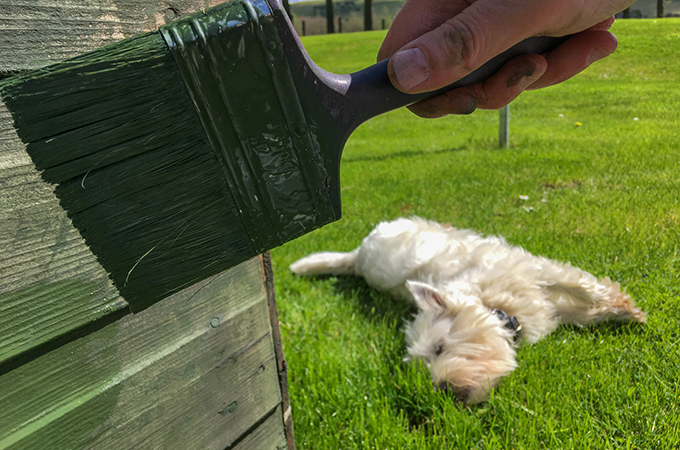
Now is the perfect time to sort out any garden building maintenance you need to do. If you’ve got a shed, you’ll need to use a treatment annually so as to protect the timber from wood rot and other unwanted diseases. A well-cared for shed will more than pay for itself over the years!
Clear away any debris that’s gathered around the shed to prevent unwanted moisture. Check your shed felt for any tears, and replace this as necessary. Walk into your shed and look for any light coming through the boards; if the light can get in, so can any rainwater that you want to keep out. Use silicone to fill up any holes around the boards or windows to keep your shed watertight.
If you have garden fencing, playhouse, or summerhouse, those will likely need to be cared for in a similar manner to make sure they can withstand whatever the weather has to throw at them over the next year.
Tidy up the greenhouse
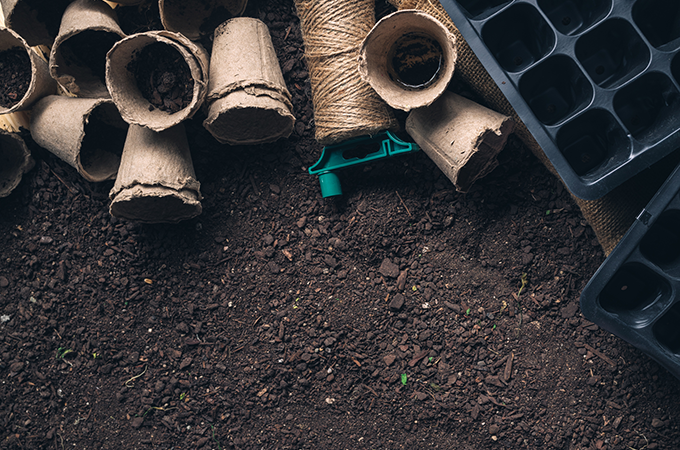
There’s nothing worse than walking into your greenhouse when spring rolls around to find it in a complete mess from last year. If you do the work now and tidy it up, you’ll be glad that you can get stuck in with the essential gardening jobs that spring brings with it!
Any plant debris that’s built up over the summer can be cleared out. Clean the glass windows, especially if you’ve used a shade paint. This way you can maximise the amount of light your greenhouse gets over the winter months.
Clean and disinfect paths and surfaces to keep away overwintering pests and fungal infections. Pots and seed trays can also be cleaned so that they’re ready for you to use next year.
Give wildlife a helping hand
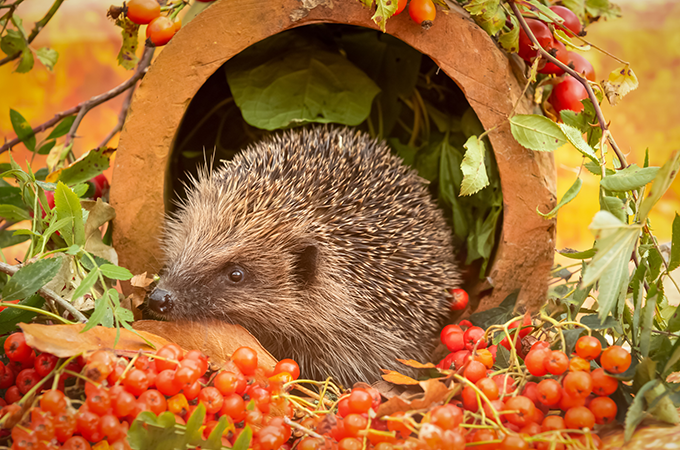
As the nights draw in sooner and sooner, and the temperature starts to drop, it’s more important than ever to give nature a little helping hand. If you don’t have one already, invest in an insect hotel; encouraging a variety of insects into your garden will help with pollination.
Hedgehogs will be thinking about hibernating soon, so give them somewhere inviting to curl up with a hedgehog house. Remember to check any piles of leaves or bonfire piles in your garden just in case any hedgehogs have made it their winter home!
These friendly little creatures will more than by for themselves by digging into your slug population.
Tidy borders

By tidying up your borders now, you’ll have a blossoming display by the time next spring rolls around. You can cut back any perennials that have faded, but if you still have some attractive seedheads make sure to leave them be for any insect visitors.
When your borders are all tidied up, you can give them a good mulch with well-rotted manure or mulch. Don’t worry about working it into the soil – worms will be all too happy to do the job for you!
Create leaf mould
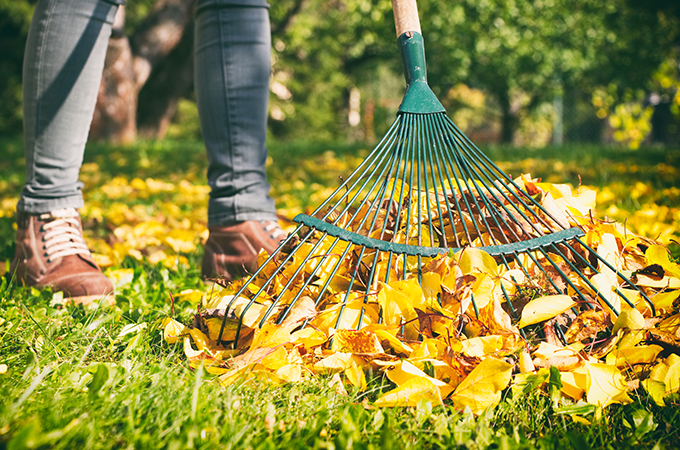
Don’t let all those pesky leaves gathered on your lawn become a problem – put them to good use in the rest of your garden. By turning any leaves in your garden to leaf mould, you can use it to mulch your borders and veg patch.
It can take a while to create leaf mould naturally, but we’ve got a variety of garden tools to help you speed up the process. Our leaf vacuums that come with a mulching feature will soon get those leaves sorted out for you, giving you a compost-ready mulch to use as you wish.
Gather seeds

After the successful summer your garden has had, it’ll be no wonder that you’re already thinking about next year and what you want to grow. Now is the perfect time to gather any seeds that you want to keep. By gathering seeds now, you’ll be saving yourself the cost of buying more next year.
Once you’ve gathered your flower heads and seedpods that you want to keep, put them in envelopes and label them. Store them somewhere dry, such as in your garage. That way they’ll be easier to find next spring when you want to get planting, and you’ll know that they’re in a suitable condition to use!
Plant and transplant
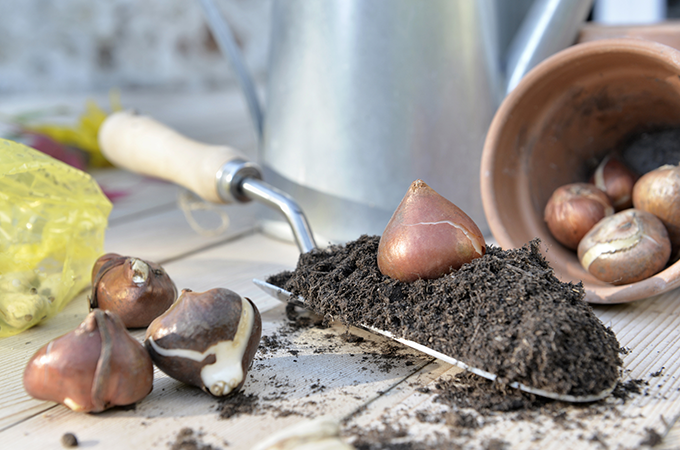
Autumn is that in between state when temperatures haven’t yet plummeted, and regular rainfall starts to occur. Which is the perfect time to move and transplant any poorly placed plants in your garden!
When there’s little growth above the surface, it gives your plants ample time to establish a strong root system before the weather grows colder. Now’s the time to plant any spring bulbs you want to grow next year, too – think crocuses, daffodils, and tulips.
Are there any autumn gardening jobs that you’re looking forward to? Let us know all about it over on our Facebook page!
Lead image: Mkovalevskaya via Getty Images.






